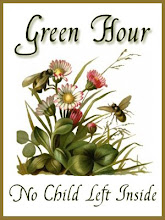1. Buzz
As soon as students learn their multiplication facts this is a great game which is actually entertaining for students up through high school. You first choose a target number – let’s say 4. The first student starts counting at one and then others follow. When a student reaches a multiple of 4 or a number with 4 in it, he or she must say “buzz” or they are out of the game. The pace must be fast. To advance the game, you can also require students to say “buzz” if the digits add up to the target number.
2. Going on a Picnic
This game can only be played once with a group of students because the purpose is to solve the trick. Invite the students to go on a picnic with you, but tell them that each person can only bring certain items, which are actually items that start with the same letter as the first letter of their first name. Tell them what you are going to bring and then start asking students to join you. If they happen to say something that fits the criteria, let them know that they are welcome to come, otherwise tell them that you are sorry. If no one catches on the after first round, give a few clues. “Haley you cannot bring potato chips, but you are welcome to come if you bring hamburgers.” Eventually, some will catch on and help you bring the others in on the secret.
3. Green Glass Door
This game is similar to “Going on a Picnic.” This time students can only pass through the Green Glass Door if they bring things that have a double letter in the spelling of the word. Once you have played this game, you can easily vary the rules: On the Huge Blue Plane you can only bring items that have a silent “e” in the word, the Main Suite only admits words that have homophones. Students go crazy for these and they are actually fun to try with adults.
4. 20 Questions
I love this timeless game that actually requires a great deal of critical thinking. The classic method can be played almost anywhere, but a great way to draw students into this game is to let them bring in an object. Each student gets to take home and return the “mystery box” with an item for questioning. They love the opportunity to answer the questions and show off some of their own possessions. Students will usually want to go well beyond 20 questions to solve the mystery.
5. Split
This game is fairly advanced and probably most appropriate for students in 5th grade and above, and is best with 4 players. The object of the game is to avoid spelling a word. The first person in the group says a letter and must have a word that starts with that letter in mind, but does not say it aloud. The next player adds a letter to the original and, again, must have a word in mind that starts with those two letters. This continues until someone has to spell out a word. At each step, if a player is able to add a letter without spelling a word, he or she must have one in mind. Other players can call “split” and challenge a player. If no word is shared, that player loses the round. When a round is lost, a player must take the letter S, then P, and so on until SPLIT is spelled.
Example: Player 1 begins with “S”; Player 2 adds “P”; Player 3 adds “R”; Player 4 adds “I”; Player 5 adds “N”; (at this point most are probably think they have trapped Player 6 – but Player 6 is thinking “sprinkle) Player 6 adds “K”; Player 7 adds “L”; Player 8 adds “I” (thinking “sprinkling”); Player 9 adds “N”; and Player 10 must add “G” and lose the game
6. The Sad Truth
This game was actually one I played with myself for years. I have always searched for signs where people have made blatant grammatical, spelling, or punctuation errors. I finally started sharing these with the students and they loved it! I turned this into a game by posting a picture of my findings or writing the incorrect phrase on the board when we have a few minutes to kill. The students must find and correct the mistake on a note card. I keep a running tally of the leading grammar busters. The students find great humor in others’ oversights and actually become much better grammarians in the process. Since finding enough to fill a school year may be impossible, here are a few resources that I have used in the past:
- http://www.illiteratebusinesses.ca/ – this blog frequently posts business signs with spelling, grammar, and punctuation errors.
- Lynne Truss, the author of Eats, Shoots, and Leaves, has written several children’s books that provide numerous examples highlighting the importance of correct punctuation
- Consumer Reports – Each month the last page of this magazine is devoted to signs and advertisements with incorrect grammar or usage that could be seriously misinterpreted. Although some may be to advanced for young students, I usually find a few goods ones to share.
















3 comments:
OHhhhh! This is such a FUN post!
I am going to be playing Picnic with some children next month just before we take off on a nature walk! EXcellent idea!
I got so excited about the Picnic game, I didnt read the others games yet. Guess I better go do that now. :-)
Thanks for sharing!!!!
Very cool post! Thanks. :-)
I am glad you like the games and can use them!
Post a Comment